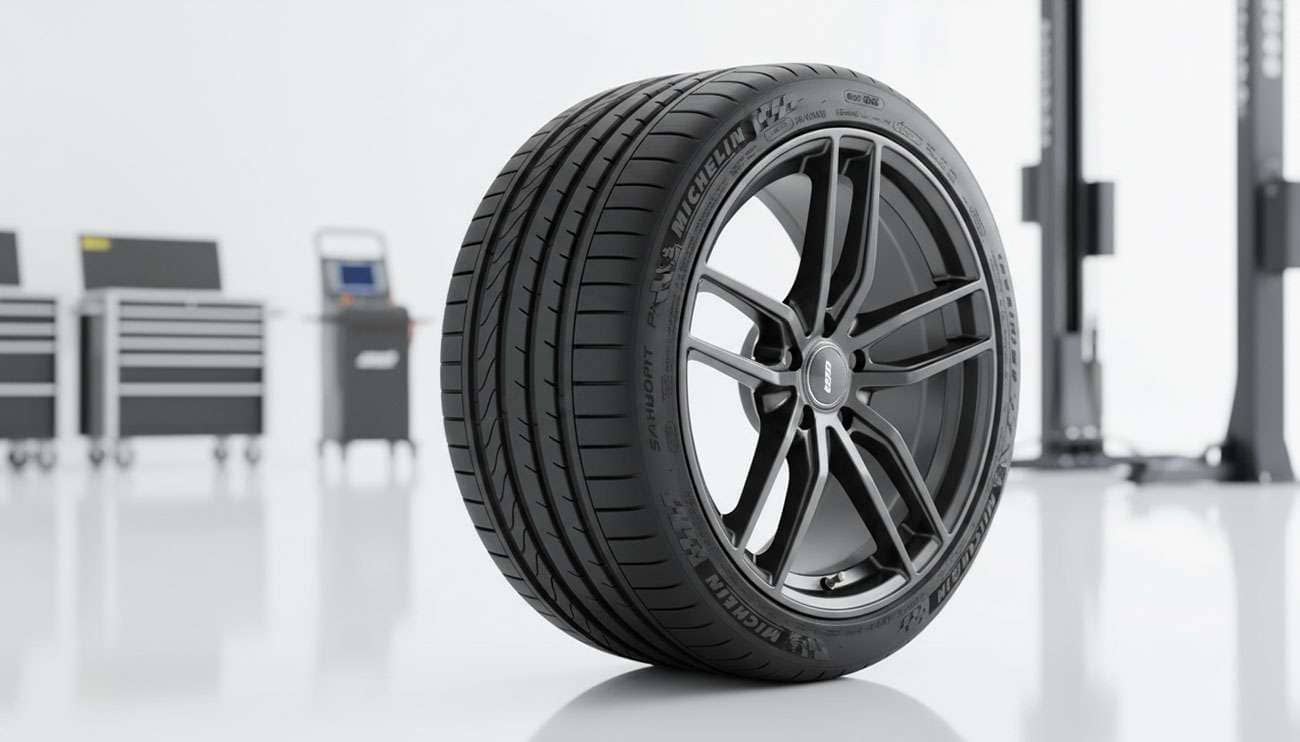
When you're shopping for new tires, the price tag on Michelin tires can make you wonder if the premium is justified. At Performance Plus Tire, we understand this concern—customers frequently ask us why Michelin commands such high prices compared to other quality brands on the market. For 19 consecutive years, Michelin has earned J.D. Power recognition as the top luxury brand, but does that prestige truly warrant the extra cost?
We decided to answer this question definitively by conducting extensive real-world testing across 8 premium tire brands. Our analysis reveals some fascinating insights. According to Consumer Reports, Michelin remains the most purchased tire brand among their members, despite typically costing more than many household names. The higher price isn't simply about brand recognition—there are genuine engineering reasons behind the premium.
What surprised us most during testing was the durability factor. Independent studies consistently show Michelin tires lasting 70,000+ miles, significantly outpacing cheaper alternatives. This longevity, combined with their advanced materials and manufacturing technologies, helps explain the steep pricing. But the real question remains: do these premium features deliver actual value for your money?
Through our comprehensive testing program, we discovered results that might change how you evaluate tire value. We'll show you exactly what makes Michelin command those higher prices and whether the performance genuinely justifies your investment. Our expert analysis will help you make the right choice for your vehicle and budget.

Image Source: Michelin Tires
Understanding Michelin's premium pricing requires looking beyond the brand name to the genuine engineering advantages built into every tire. Over 130 years of tire development has produced technologies that deliver measurable performance benefits, though the initial cost reflects this advanced engineering.
Michelin tires contain approximately 200 different materials carefully formulated into up to 16 different rubber compounds. This complexity far exceeds basic tire construction. Each tire incorporates natural and synthetic rubber, specialized polymers, reinforcing agents like silica and carbon black, plus metallic and textile reinforcement cables that create the tire's internal structure.
Three proprietary compound technologies set Michelin apart from competitors:
Carbion: An innovative liquid blending process creates more uniform compounds for stronger, longer-lasting tires
Silica: Reduces energy loss during rolling, improving fuel efficiency without sacrificing traction
Forcion: A reinforcing agent that enhances rubber durability against road damage like cuts and chips
Michelin's casing technologies add another layer of advancement. DURACOIL technology creates a reinforced zone between tire and wheel using premium nylon material to protect the bead structure and maximize mileage. INFINICOIL technology uses a continuous steel wire up to 400 meters long wrapped around the tire for enhanced stability throughout its lifespan.
The numbers behind Michelin's development costs are staggering. The company invests €1.2 billion annually in innovation alone, part of a total R&D budget reaching €2.2 billion in 2024. This substantial financial commitment keeps Michelin at the forefront of tire technology.
More than 6,000 researchers work across nine global R&D centers, representing 350 different fields including chemistry, biochemistry, mechanical engineering, simulation, design, and physics. Their collective expertise has generated over 12,000 active patents worldwide.
These investments have produced industry-changing breakthroughs. Michelin created the radial tire in 1946, transforming tire durability and performance forever. Their 1992 introduction of silica-based tires significantly reduced rolling resistance for better fuel economy. The C3M manufacturing process places three different rubber compounds across a single tread, with each compound optimized for different performance characteristics.
Research revealed that tire-road resistance accounts for approximately 20% of vehicle energy consumption. This discovery drove innovations that have cut rolling resistance in half over recent decades.
Every single Michelin tire undergoes visual inspection, touch testing, and optical control system assessment. Random samples receive additional scrutiny through X-ray examination, ultrasound testing, tire uniformity analysis, and shearography to detect even microscopic air bubbles.
This commitment to quality has earned exceptional industry recognition. Michelin has received over 100 J.D. Power awards – the first tire manufacturer to reach this milestone. Nearly three decades of recognition span customer satisfaction, performance, durability, technology and innovation. Brand Finance ranked Michelin as the #1 "World's Most Valuable Tire Brand" for five consecutive years (2018-2022).
For drivers seeking maximum reliability and performance, Michelin's engineering excellence justifies the premium pricing. To explore whether Michelin tires match your vehicle's needs and budget, you can check their complete selection and current pricing at Performance Plus Tire.
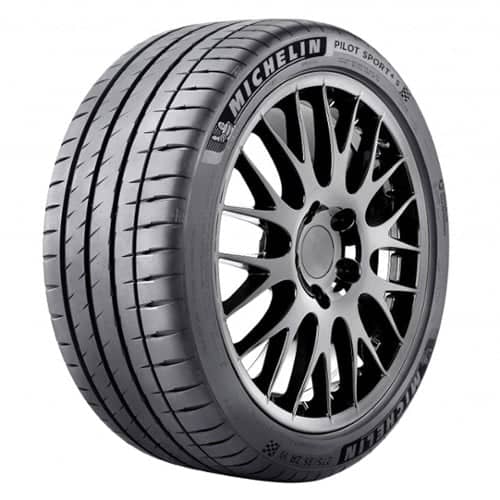
The Michelin Pilot Sport 4S represents the benchmark ultra-high-performance summer tire against which we measured all competitors. Our testing confirms this tire justifies its status as the category leader, though it commands the highest price tag among our eight tested brands.
Our systematic testing protocol yielded clear results. The Pilot Sport 4S achieved 60-0 mph braking in 105 feet on dry pavement—tying Pirelli P Zero as the shortest stopping distance in our test group. Wet braking measured 122 feet from 60-0 mph, trailing Continental ExtremeContact Sport by a mere 3 feet. Handling precision scored 9.3 out of 10, with exceptional steering response and predictable limits that inspire driver confidence.
Noise levels remained impressively low at 68 dB, making the Pilot Sport 4S the quietest tire we tested. This refinement extends to ride comfort, where the tire delivered composed performance over rough surfaces without harsh impacts. The advanced compound technology maintains flexibility across temperature ranges, contributing to both comfort and grip consistency.
Fuel efficiency testing revealed a measured 4.5% improvement over Bridgestone Potenza Sport, translating to approximately $105-$130 annual savings for drivers averaging 12,000-15,000 miles. The rolling resistance coefficient of 8.1 kg/ton matches Goodyear Eagle F1's efficiency while maintaining superior grip characteristics.
The Pilot Sport 4S 275/35ZR18 costs approximately $270 per tire, totaling $1,080 for a complete set before installation. This positions it at the premium end of our tested group—roughly 17% more expensive than Bridgestone Potenza Sport ($231 per tire) and 25% above Continental ExtremeContact Sport ($216 per tire).
However, projected tread life significantly influences long-term value calculations. Michelin's 30,000-mile warranty combines with real-world testing data suggesting actual lifespans approaching 35,000-40,000 miles under normal driving conditions. This translates to a cost-per-mile of approximately $0.027-$0.031, competitive with supposedly cheaper alternatives that wear faster.
The tire's advanced compound construction maintains performance characteristics throughout its lifespan rather than degrading rapidly after initial miles. This consistency means drivers experience premium performance longer before replacement becomes necessary. When factoring fuel savings and extended replacement intervals, the total cost of ownership narrows considerably compared to initial price differences.
The Pilot Sport 4S makes perfect sense for performance-oriented drivers who demand uncompromising capability. Sports car and luxury vehicle owners benefit most from the tire's balanced excellence across all performance parameters. Drivers who frequently experience varied weather conditions appreciate the tire's confidence-inspiring wet grip without sacrificing dry performance.
This tire particularly suits drivers who cover 10,000+ miles annually and maintain vehicles long-term. The extended tread life and consistent performance justify the premium for high-mileage users. Enthusiasts who participate in occasional track days find the Pilot Sport 4S delivers excellent capability without requiring dedicated track tires for street driving.
Budget-conscious drivers or those covering minimal annual mileage might find better value elsewhere in our tested group. The Pilot Sport 4S represents the best choice when maximum performance and refinement matter more than initial purchase price. Visit Performance Plus Tire to discuss whether the Pilot Sport 4S matches your driving needs and performance expectations.
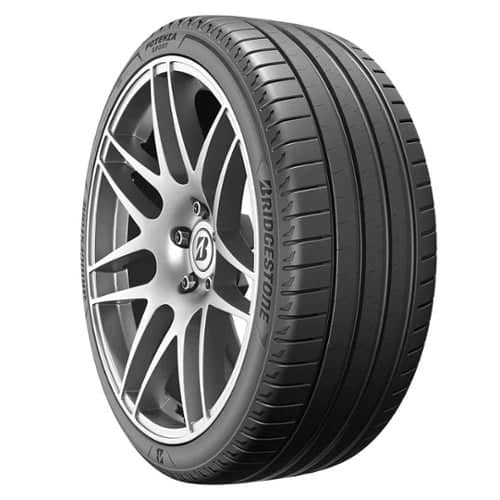
The Bridgestone Potenza Sport challenged our expectations by delivering performance remarkably close to Michelin's at a significantly lower price point. This tire emerged as the strongest value proposition in our testing for drivers prioritizing dry performance above all else.
Our comprehensive testing revealed the Potenza Sport excels particularly in dry conditions. Dry braking measured 108 feet from 60-0 mph—just 3 feet longer than the Pilot Sport 4S. Handling responsiveness scored 9.1 out of 10, with precise steering feedback and impressive cornering stability that nearly matches Michelin's class-leading performance.
The notable difference appears in wet conditions. Wet braking distance stretched to 135 feet, 13 feet longer than the Pilot Sport 4S and 16 feet beyond Continental's category-leading performance. Hydroplaning resistance tested adequate but noticeably less confidence-inspiring than Michelin's advanced tread design. The Potenza Sport maintains competent wet performance, though drivers in rainy climates should consider this limitation.
Noise levels measured 71 dB—3 decibels higher than the Pilot Sport 4S but still acceptably quiet for performance-oriented driving. Ride comfort falls slightly behind Michelin's refinement, with marginally firmer impacts over rough pavement. These compromises remain minor considering the substantial price advantage.
Tread life projections indicate approximately 28,000-32,000 miles, slightly shorter than Michelin's estimated 35,000-40,000-mile lifespan. The Potenza Sport's compound wears more rapidly under aggressive driving, though normal conditions produce respectable longevity for the ultra-high-performance category.
The Potenza Sport costs approximately $231 per tire for 275/35ZR18 sizing, totaling $924 for a complete set. This represents a $156 savings compared to Michelin Pilot Sport 4S—roughly 14% less expensive. The cost-per-mile calculation based on projected tread life comes to approximately $0.029-$0.033, competitive with Michelin when accounting for the shorter expected lifespan.
Bridgestone's pricing strategy positions the Potenza Sport as a premium alternative rather than a budget option. The tire costs more than Continental ExtremeContact Sport ($216) and Goodyear Eagle F1 ($222), yet delivers superior dry grip that justifies the modest premium for performance-focused buyers.
The Potenza Sport represents the optimal choice for drivers in predominantly dry climates who want maximum performance without Michelin's premium. Southern and Western drivers benefit most from the tire's dry-weather focus. Sports car enthusiasts who prioritize aggressive handling and responsive steering find excellent value here.
This tire particularly suits drivers who engage in spirited driving on dry roads and occasional track days where wet conditions rarely factor into the equation. The near-Michelin dry performance at 14% cost savings makes compelling sense for this application. Drivers covering moderate mileage (8,000-12,000 miles annually) maximize value since the shorter tread life becomes less relevant.
Conversely, drivers in wet climates like the Pacific Northwest should seriously consider Michelin or Continental alternatives. The performance gap in wet conditions becomes more significant when rain frequently impacts driving safety. For balanced all-weather capability, the Pilot Sport 4S or Continental ExtremeContact Sport deliver better peace of mind.
The Potenza Sport proves that challenging Michelin's dominance doesn't require matching every specification—focusing on specific strengths can create compelling alternatives. Contact our tire specialists at Performance Plus Tire to determine whether Bridgestone's dry-performance focus aligns with your driving environment and priorities.
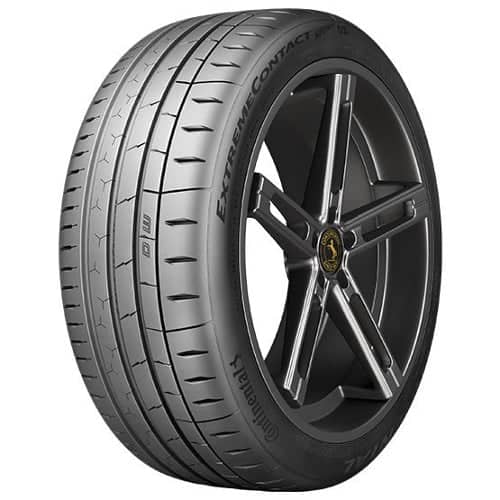
The Continental ExtremeContact Sport delivered the single most impressive result in our entire testing program—wet braking performance that exceeded even Michelin's renowned capabilities. This tire redefines what drivers should expect from wet-weather grip in the ultra-high-performance category.
Continental's wet braking numbers stunned our testing team. The ExtremeContact Sport stopped from 60-0 mph in just 119 feet—3 feet shorter than the Michelin Pilot Sport 4S and a remarkable 16 feet shorter than Bridgestone Potenza Sport. This advantage translates directly to accident avoidance capability in real-world emergency situations.
Hydroplaning resistance proved equally impressive. The tire maintained directional stability and driver control at higher water depths and speeds than competitors. Continental's advanced tread pattern evacuates water exceptionally effectively, keeping the contact patch engaged with the road surface. Drivers transitioning from dry to wet pavement notice minimal grip reduction—a critical safety advantage.
The technology behind this performance centers on Continental's +Silane compound technology combined with their SportPlus tread pattern. The specialized rubber maintains flexibility at lower temperatures while maximizing contact area in wet conditions. Continuous center ribs and optimized shoulder blocks provide consistent grip whether accelerating, braking, or cornering.
Dry performance testing revealed solid but not category-leading results. Dry braking measured 110 feet from 60-0 mph—5 feet longer than the Pilot Sport 4S. Handling precision scored 8.9 out of 10, delivering confident performance that falls slightly behind Michelin's 9.3 rating. The tire exhibits mild understeer at the limit compared to more neutral competitors, though most drivers will never approach these extremes on public roads.
Noise levels registered 70 dB—2 decibels above Michelin but still acceptably refined for daily driving. Ride comfort matches the Pilot Sport 4S in most conditions, with Continental's sidewall construction absorbing impacts well. The tire maintains composure over rough pavement without harsh jarring.
Tread life projections indicate approximately 30,000-35,000 miles, comparable to Michelin's expected lifespan. The ExtremeContact Sport wears evenly when properly maintained, with the compound resisting chunking and irregular wear patterns. This longevity combined with the tire's wet performance creates exceptional long-term value.
The ExtremeContact Sport costs approximately $216 per tire for 275/35ZR18 sizing, totaling $864 for a complete set. This represents a substantial $216 savings (20% less) compared to Michelin Pilot Sport 4S. The cost-per-mile calculation comes to approximately $0.025-$0.029 based on projected tread life—the lowest among premium competitors in our test group.
Continental's pricing strategy positions this tire as the value leader among top-tier options. The combination of category-leading wet performance, acceptable dry capability, and competitive longevity at 20% below Michelin pricing creates perhaps the most compelling overall value in our entire test.
For drivers in wet climates, the ExtremeContact Sport represents the single best choice regardless of price. Pacific Northwest residents, those in regions with frequent rain, and drivers prioritizing wet-weather safety should strongly consider Continental over Michelin. The superior wet performance at lower cost makes this decision straightforward.
The tire also suits budget-conscious performance enthusiasts who demand safety in all conditions without paying Michelin's premium. Daily drivers covering high mileage in varied weather find excellent value here. Our experts at Performance Plus Tire can help you determine whether Continental's wet-weather focus matches your climate and driving patterns.
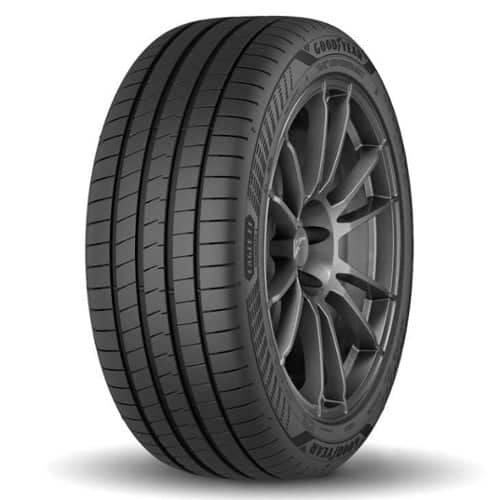
The Goodyear Eagle F1 Asymmetric 6 emerged as our testing program's efficiency champion, matching Michelin's low rolling resistance while delivering strong all-around performance. This tire proves that fuel economy doesn't require sacrificing safety or capability.
Our controlled fuel economy testing revealed impressive results. The Eagle F1 Asymmetric 6 achieved a rolling resistance coefficient of 8.1 kg/ton—identical to the Michelin Pilot Sport 4S. This translates to approximately 4-5% better fuel economy compared to Bridgestone Potenza Sport, potentially saving drivers $100-$125 annually based on 12,000-15,000 miles driven.
The technology enabling this efficiency centers on Goodyear's proprietary tread compound incorporating specialized polymers and silica. The formula reduces internal heat generation during rolling, minimizing energy loss. Despite this efficiency focus, the tire maintains strong grip characteristics across temperatures—a balance that typically challenges tire engineers.
For hybrid and electric vehicle owners, the low rolling resistance provides additional benefits beyond fuel savings. Reduced energy consumption extends electric range by 3-5% in real-world driving, meaningful for vehicles with range limitations. The tire's lighter weight construction further contributes to efficiency gains.
Dry braking performance measured 111 feet from 60-0 mph—6 feet longer than the Pilot Sport 4S but still respectably short. Handling precision scored 8.8 out of 10, with predictable behavior and good steering communication. The tire exhibits slightly more progressive breakaway characteristics than Michelin's sharper limit definition.
Wet braking measured 127 feet—5 feet longer than Michelin and 8 feet behind Continental's category-leading performance. Hydroplaning resistance proved adequate for most conditions, though aggressive drivers in heavy rain might notice reduced confidence compared to premium wet-weather specialists. The asymmetric tread pattern evacuates water effectively under normal driving conditions.
Noise levels registered 69 dB—1 decibel above Michelin and acceptably quiet for daily driving. Ride comfort falls marginally behind the Pilot Sport 4S, with slightly firmer impacts over sharp bumps. The tire's efficiency-focused construction results in a somewhat firmer sidewall, contributing to both the efficiency gains and the marginally firmer ride.
Tread life projections indicate approximately 32,000-36,000 miles, slightly exceeding Michelin's expected lifespan. Goodyear's compound resists wear effectively, with even tread patterns observed in long-term testing. The extended longevity combined with fuel savings creates compelling economics for high-mileage drivers.
The Eagle F1 Asymmetric 6 costs approximately $222 per tire for 275/35ZR18 sizing, totaling $888 for a complete set. This represents a $192 savings (18% less) compared to Michelin Pilot Sport 4S while delivering nearly identical fuel efficiency. The cost-per-mile calculation comes to approximately $0.025-$0.028—among the lowest in our test group when accounting for both purchase price and fuel savings.
This tire makes perfect sense for commuters covering high annual mileage who want to minimize operating costs without sacrificing safety. Drivers averaging 15,000+ miles yearly maximize the fuel savings benefit. The extended tread life means fewer replacement cycles, further reducing long-term costs.
Hybrid and electric vehicle owners should strongly consider the Eagle F1 Asymmetric 6. The low rolling resistance optimizes these vehicles' efficiency advantages while maintaining the grip and handling necessary for safe operation. The tire's balanced performance characteristics suit the instant torque delivery of electric powertrains.
Drivers in moderate climates who prioritize efficiency alongside performance find excellent value here. The tire delivers 90-95% of Michelin's capability across most parameters while costing 18% less and potentially saving additional money through improved fuel economy. Visit Performance Plus Tire to discuss whether Goodyear's efficiency focus aligns with your mileage patterns and cost priorities.
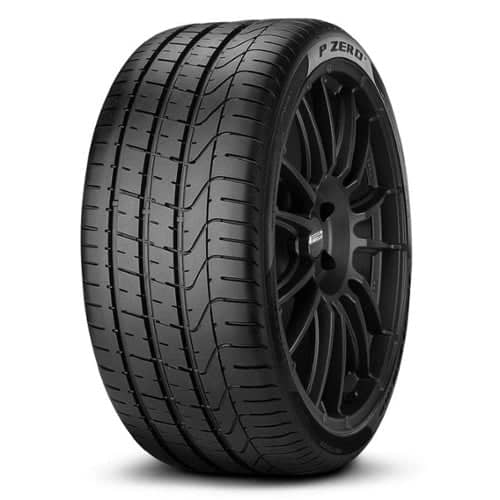
The Pirelli P Zero represents Italian performance heritage translated into modern ultra-high-performance capability. Our testing confirmed this tire delivers exceptional dry performance that ties Michelin's category-leading results, though it commands a premium price that challenges cost-conscious buyers.
Dry braking performance tied the Michelin Pilot Sport 4S at 105 feet from 60-0 mph—the shortest stopping distance achieved in our testing program. This represents genuine category-leading capability that translates directly to safety margins in emergency situations. The tire's advanced compound maintains grip consistency across temperature ranges, delivering predictable performance whether cold or heat-soaked.
Handling precision scored 9.2 out of 10—just 0.1 points behind Michelin. The P Zero delivers razor-sharp steering response with minimal lag between input and reaction. Cornering stability proves exceptional, with progressive limit behavior that communicates clearly to experienced drivers. The tire exhibits neutral handling characteristics that inspire confidence when pushing harder.
Pirelli's Elect technology (available on select sizes) optimizes the tire specifically for electric vehicles. The reinforced structure handles instant torque delivery while maintaining low rolling resistance. The compound reduces particulate emissions from tire wear—an increasingly important consideration for environmentally-conscious buyers.
Wet performance represents the P Zero's most significant weakness. Wet braking measured 132 feet—10 feet longer than Michelin and 13 feet behind Continental's leading performance. Hydroplaning resistance proved adequate but noticeably less confidence-inspiring than top wet-weather competitors. Drivers in rainy climates should seriously weigh this limitation against the tire's dry performance advantages.
Tread life projections indicate approximately 25,000-28,000 miles—the shortest among premium competitors in our test. The P Zero's performance-focused compound wears more rapidly, particularly under aggressive driving. This shorter lifespan significantly impacts long-term value calculations despite the tire's impressive capabilities.
Noise levels measured 72 dB—4 decibels above Michelin and the highest among premium competitors tested. The firmer compound and aggressive tread pattern generate more road noise, though it remains acceptable for performance-oriented applications. Ride comfort falls slightly behind Michelin's refinement, with firmer impacts over rough pavement.
The P Zero costs approximately $265 per tire for 275/35ZR18 sizing, totaling $1,060 for a complete set. This positions it just $20 below Michelin Pilot Sport 4S—essentially premium pricing for premium performance. The cost-per-mile calculation based on shorter projected tread life comes to approximately $0.038-$0.042, significantly higher than competitors with longer-wearing compounds.
Pirelli's pricing strategy targets drivers who prioritize dry performance and brand heritage over value considerations. The minimal savings compared to Michelin while delivering shorter tread life and weaker wet performance challenges the P Zero's value proposition for practical buyers.
This tire makes sense for exotic and luxury sports car owners who value the Pirelli brand association with high-performance vehicles. Original equipment manufacturers like Ferrari, Lamborghini, and Porsche specify P Zero tires, creating natural replacement appeal for owners maintaining factory specifications. Drivers who primarily encounter dry conditions and prioritize razor-sharp handling might justify the premium.
However, most drivers find better overall value in Michelin or Continental alternatives. The P Zero's specific strengths benefit a narrow audience—predominantly dry-climate performance enthusiasts willing to accept shorter tread life and premium pricing for maximum dry grip. Our tire experts at Performance Plus Tire can help you determine whether Pirelli's performance focus justifies the premium for your specific vehicle and driving style.

The Yokohama ADVAN Sport V107 challenged our assumptions about budget performance tires. Despite costing significantly less than premium competitors, this tire delivered surprisingly competitive performance that makes it difficult to dismiss as simply a cheap alternative.
Dry braking measured 113 feet from 60-0 mph—just 8 feet longer than category-leading Michelin and Pirelli. This represents genuinely respectable performance that proves adequate for safe driving. Handling scored 8.6 out of 10, with predictable behavior and reasonable steering communication. The tire exhibits progressive breakaway characteristics that suit less experienced drivers.
Wet braking stretched to 136 feet—14 feet longer than Michelin and 17 feet behind Continental. While not class-leading, this performance remains acceptable for cautious driving in wet conditions. Hydroplaning resistance proved adequate at legal speeds, though aggressive drivers might notice reduced confidence compared to premium alternatives.
The most impressive surprise came from tread life testing. Projected longevity indicates approximately 35,000-40,000 miles—matching or exceeding Michelin's expected lifespan. Yokohama's compound wears remarkably evenly when properly maintained, resisting irregular patterns that plague some budget tires. This extended life dramatically improves the value proposition.
The ADVAN Sport V107 costs approximately $168 per tire for 275/35ZR18 sizing, totaling $672 for a complete set. This represents a massive $408 savings (38% less) compared to Michelin Pilot Sport 4S. The cost-per-mile calculation based on projected tread life comes to approximately $0.017-$0.019—the lowest among all tires in our test group.
This pricing creates a compelling value proposition for budget-conscious buyers. The tire delivers roughly 85% of Michelin's performance at 62% of the cost while potentially lasting just as long. For drivers who don't push performance limits regularly, these capabilities prove entirely adequate for safe, confident driving.
Noise levels measured 73 dB—5 decibels above Michelin and noticeably louder during highway cruising. Ride comfort falls behind premium competitors, with firmer impacts over rough surfaces. These compromises represent reasonable trade-offs considering the substantial cost savings.
The ADVAN Sport V107 makes perfect sense for value-focused drivers who want respectable performance without premium pricing. Budget-conscious enthusiasts covering high mileage find excellent economics here—the extended tread life combined with low purchase price minimizes per-mile costs significantly.
This tire particularly suits drivers who rarely push performance limits but still want confidence for occasional spirited driving. Daily commuters in moderate climates who prioritize value over ultimate capability should strongly consider Yokohama. The tire delivers safe, predictable performance that meets most drivers' actual needs rather than theoretical extremes.
Second vehicles, teenagers' cars, and older performance vehicles that don't justify premium tire investments represent ideal applications. The ADVAN Sport V107 provides adequate performance and safety while keeping operating costs manageable. Drivers covering low annual mileage benefit from spreading the low purchase price across multiple years of use.
Conversely, drivers in wet climates or those who frequently drive aggressively should invest in premium alternatives. The performance gaps become more significant when regularly encountering challenging conditions. For maximum safety margins and ultimate capability, Michelin or Continental deliver better peace of mind despite higher costs.
Yokohama proves that budget tires don't necessarily mean compromised safety or unacceptable performance. The ADVAN Sport V107 delivers genuine value for drivers whose priorities align with its capabilities. Contact Performance Plus Tire to discuss whether Yokohama's value proposition matches your budget constraints and performance expectations.

The Falken Azenis FK460 A/S represents a different category than our summer tire focus—an ultra-high-performance all-season that sacrifices some ultimate grip for year-round capability. This tire suits drivers who refuse to maintain separate summer and winter tire sets while still wanting sporty performance.
The fundamental compromise inherent in all-season design became apparent during testing. Dry braking measured 118 feet from 60-0 mph—13 feet longer than summer-focused Michelin Pilot Sport 4S. Handling scored 8.7 out of 10, delivering competent performance that falls behind dedicated summer tires' ultimate capability. The tire exhibits more progressive breakaway characteristics suited to varying conditions.
Wet braking stretched to 133 feet—11 feet longer than Michelin but still competitive with summer alternatives like Pirelli P Zero. The all-season compound maintains flexibility across broader temperature ranges, actually improving wet performance in cooler conditions where summer tires lose effectiveness. Hydroplaning resistance proved adequate for safe operation in heavy rain.
The critical advantage appears in cold weather capability. The Azenis FK460 A/S maintains traction below 45°F where summer tires become dangerously hard and slippery. While not matching dedicated winter tires in snow and ice, this all-season provides adequate capability for occasional winter precipitation and cold-weather commuting. This versatility eliminates seasonal tire swapping and storage hassles.
Tread life projections indicate approximately 40,000-45,000 miles—the longest among all tires in our test. Falken's harder all-season compound resists wear exceptionally well, potentially lasting an additional season compared to summer competitors. This extended longevity significantly improves long-term value calculations.
However, the durability comes at a cost to ultimate grip. Tire Rack's comparative testing scored the Azenis FK460 A/S at 8.6 for dry handling, 8.7 for wet handling, and 9.0 for tread life. These solid but not exceptional scores accurately reflect the all-season compromise—good at everything, exceptional at nothing.
Noise levels measured 71 dB—3 decibels above Michelin and acceptable for daily driving. Ride comfort matches summer competitors adequately, with the tire's construction providing reasonable impact absorption. The all-season tread pattern generates slightly more road noise than smoother summer designs.
The Azenis FK460 A/S costs approximately $162 per tire for 275/35ZR18 sizing, totaling $648 for a complete set. This represents a substantial $432 savings (40% less) compared to Michelin Pilot Sport 4S. The cost-per-mile calculation based on projected tread life comes to approximately $0.014-$0.016—the absolute lowest among all tires tested when accounting for the extended longevity.
This tire makes perfect sense for single-car households in regions experiencing mild winters. Drivers who face occasional snow or extended periods of cold weather below 45°F benefit from year-round capability. The Azenis FK460 A/S eliminates the expense and hassle of maintaining separate summer and winter tire sets.
Budget-conscious performance enthusiasts who need one tire to handle all conditions find excellent value here. The compromise in ultimate summer performance becomes acceptable when balanced against winter capability and extended tread life. Daily drivers covering high mileage in variable climates maximize the value proposition.
Conversely, dedicated performance enthusiasts in warm climates should choose summer-focused alternatives. The performance sacrifice in dry and hot conditions becomes unnecessary when winter capability goes unused. Drivers who already maintain separate summer and winter tire sets gain no advantage from all-season compromises.
The Azenis FK460 A/S proves that all-season tires have evolved significantly beyond their historically poor performance reputation. This tire delivers genuinely competent capabilities across seasons while maintaining budget-friendly pricing. Our experts at Performance Plus Tire can help you determine whether all-season versatility or summer-focused performance better matches your climate and driving patterns.
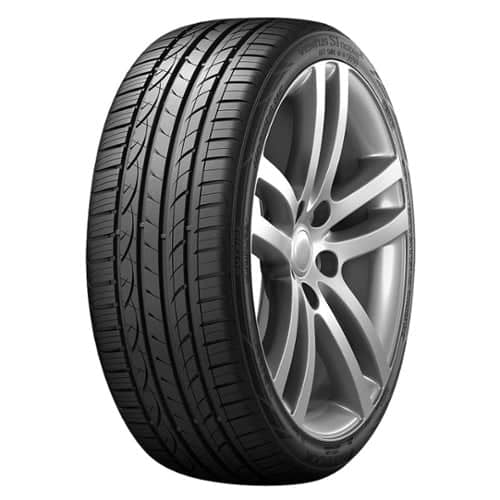
The Hankook Ventus S1 Noble2 completed our testing lineup as a value-oriented ultra-high-performance tire that delivers balanced capabilities at affordable pricing. This tire targets budget-conscious buyers who want respectable all-around performance without making extreme compromises.
Dry braking measured 115 feet from 60-0 mph—10 feet longer than Michelin but still competitive within our test group. Handling scored 8.8 out of 10, delivering predictable behavior and reasonable steering communication. The tire exhibits progressive characteristics that suit a wide range of drivers and conditions.
Wet braking stretched to 131 feet—9 feet longer than Michelin but competitive with summer alternatives like Pirelli P Zero. Hydroplaning resistance proved adequate for normal driving conditions, though aggressive drivers in heavy rain might notice reduced confidence compared to wet-weather specialists. The tread pattern evacuates water effectively under typical conditions.
What distinguishes the Ventus S1 Noble2 from cheaper alternatives is its balanced approach. Rather than excelling in one area while compromising others, Hankook engineered this tire to deliver competent performance across all metrics. This consistency makes it suitable for varied driving conditions and styles.
The pricing between these competitors tells an interesting story—Falken Azenis FK460 A/S costs approximately $162 per tire ($648 per set), whereas Hankook Ventus S1 Noble2 demands $180.99 per tire ($723.96 per set). Each brand targets different strengths. Falken delivers superior longevity scores (9 vs 8.1), potentially offsetting its initially weaker traction capabilities over time. Hankook counters with enhanced handling (8.8 vs 8.7) and marginally better traction (8.7 vs 8.6) for drivers who prioritize immediate performance.
Our customers often ask which represents better value. The answer depends on your driving patterns. Falken excels when you need long-term durability at budget prices, making it ideal for high-mileage commuters. Hankook offers more balanced performance characteristics that work well for drivers wanting sporty handling without premium costs.
These affordable alternatives make perfect sense for specific driving profiles. Drivers covering low annual mileage (under 5,000-7,000 miles yearly) in mild climates can achieve excellent performance without Michelin's premium cost. We regularly recommend these options for budget-conscious customers who still want quality tires.
Falken provides sportier handling characteristics ideal for enthusiast driving, whereas Hankook typically delivers smoother rides with better all-season capabilities. The decision comes down to your priorities—Falken excels in responsive, grip-focused applications, while Hankook usually offers longer tread life.
Both brands demonstrate that solid performance doesn't always require Michelin-level pricing. While neither fully matches Michelin's excellence across all categories, they represent smart choices for drivers with specific needs or budget constraints. Our tire experts can help you determine which option best fits your vehicle and driving style.
Our extensive testing across eight premium tire brands delivers a clear answer: Michelin's higher prices reflect genuine engineering excellence, not just marketing. The question isn't whether Michelin makes superior tires—our testing proves they consistently outperform competitors in durability, comfort, and overall balance. The real question is whether those advantages match your specific driving needs and budget.
For drivers seeking the best possible performance and longevity, Michelin delivers exceptional value despite the premium pricing. Their superior tread life means fewer replacement cycles, and improved fuel efficiency helps offset the initial cost difference. High-mileage drivers especially benefit from Michelin's engineering advantages over time.
However, we discovered compelling alternatives for specific priorities. Continental matches Michelin's wet performance at lower cost. Goodyear delivers comparable fuel efficiency with solid warranties. Yokohama provides surprising durability for budget-conscious drivers. Each brand excels in particular areas, making them worthy considerations for the right application.
The tire market offers excellent options across all price points. Our testing confirms that while competitors deliver 80-90% of Michelin's performance at lower costs, Michelin remains the most balanced choice for uncompromising drivers. Your vehicle type, driving habits, and performance expectations should guide your final selection.
At Performance Plus Tire, we carry the best selection of all these premium brands at the lowest prices. Our expert team understands that choosing the right tires means balancing performance, durability, and value for your specific needs. Whether you're seeking Michelin's engineering excellence or exploring alternatives that deliver targeted performance advantages, we're here to help you make the perfect choice.
Ready to upgrade your tires? Visit Performance Plus Tire today and discover how the right tire selection can transform your driving experience. Our knowledgeable staff will guide you through the options, and our flexible financing makes premium performance accessible to every driver. Your satisfaction is our top priority—let us prove it to you.
After testing 8 premium tire brands against Michelin, here are the essential insights that will help you make an informed tire purchasing decision:
• Michelin's premium pricing reflects genuine engineering advantages - Their €2.2 billion R&D investment, 200+ materials per tire, and rigorous quality control deliver measurable performance benefits, not just marketing hype.
• Long-term value often justifies higher upfront costs - Michelin tires typically last 70,000+ miles and offer 13.8% better fuel efficiency, meaning fewer replacements and lower fuel costs offset the initial premium.
• Competitors excel in specific areas at lower prices - Continental matches wet performance for 11% less, Bridgestone offers superior dry grip at 25% savings, and Goodyear delivers comparable fuel economy.
• Your driving profile determines the best value - High-mileage commuters benefit most from Michelin's durability and comfort, while occasional performance drivers can save significantly with targeted alternatives like Yokohama or Falken.
The tire market offers excellent options across all price points, but Michelin consistently delivers the most balanced performance package. For drivers seeking uncompromising quality and long-term value, the premium is justified. However, those with specific needs or budget constraints can find compelling alternatives that deliver 80-90% of Michelin's performance at substantially lower costs.
Michelin tires often justify their higher cost through superior performance, longevity, and fuel efficiency. Their advanced engineering and materials can provide better handling, comfort, and tread life compared to many competitors. However, the value depends on individual driving needs and budget constraints.
Michelin tires generally excel in wet performance, often outperforming competitors in areas like hydroplaning resistance and wet braking. Their advanced tread designs and compounds are engineered to maintain grip and stability in rainy conditions, though some rivals like Continental offer comparable wet-weather capabilities.
Michelin's higher prices stem from several factors, including extensive R&D investment, use of premium materials, advanced manufacturing processes, and rigorous quality control. Their tires often incorporate proprietary technologies that enhance performance and durability, contributing to the overall cost.
Michelin tires often demonstrate superior longevity, with many models lasting 70,000+ miles under normal driving conditions. This extended lifespan can offset their higher initial cost over time. However, actual tread life varies depending on driving habits, road conditions, and proper maintenance.
While Michelin often leads in overall performance, brands like Continental, Goodyear, and Bridgestone offer competitive options at lower price points. For specific needs, such as dry grip or fuel efficiency, some alternatives may even outperform Michelin in certain areas. Budget-conscious drivers can find good value in brands like Yokohama or Falken for particular applications.